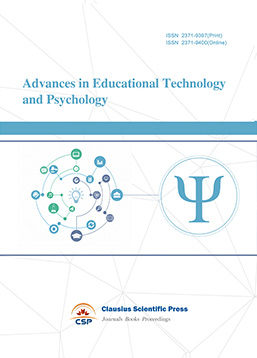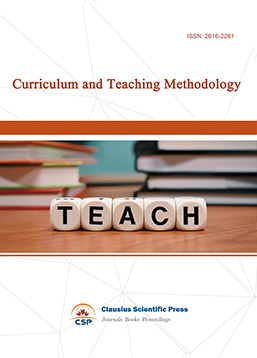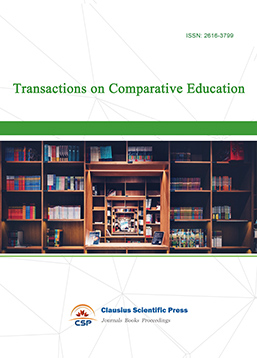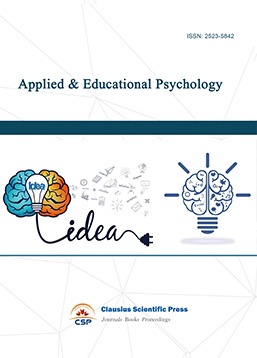Challenges and Countermeasures for Ideological and Political Education in Colleges and Universities in the Context of Digitalization
DOI: 10.23977/aduhe.2024.060722 | Downloads: 27 | Views: 1136
Author(s)
Ke Xu 1, Peng Yang 2
Affiliation(s)
1 Faculty of Continuing Education, Tianjin Normal University, Tianjin, China
2 Office of Network Security and Informatization, Tianjin Normal University, Tianjin, China
Corresponding Author
Ke XuABSTRACT
This paper examines the digital transformation of ideological and political education (IPE) in higher education institutions against the backdrop of rapid advancements in information technology. It discusses the strategic importance of this transformation in advancing the modernization of Chinese education, aligning with global trends in educational digitalization, and enhancing the effectiveness of IPE. However, the process is fraught with challenges, including technological integration, lagging educational philosophy, insufficient digital literacy, and concerns over data security and privacy protection. The paper delves into these challenges, analyzing their roots and implications, and proposes a series of countermeasures.[1] These include enhancing technological innovation and application, updating educational philosophy, improving digital literacy among teachers and students, and strengthening data security and privacy protection. By addressing these challenges and adopting effective strategies, universities can facilitate the smooth and effective digital transformation of IPE, thereby promoting educational effectiveness and contributing to the cultivation of well-rounded socialist builders and successors.[2]
KEYWORDS
Higher education; Ideological and political education; Digital transformationCITE THIS PAPER
Ke Xu, Peng Yang, Challenges and Countermeasures for Ideological and Political Education in Colleges and Universities in the Context of Digitalization. Adult and Higher Education (2024) Vol. 6: 161-167. DOI: http://dx.doi.org/10.23977/aduhe.2024.060722.
REFERENCES
[1] Zhang, W., & Li, X. (2023). Challenges and Countermeasures of Digital Transformation of Ideological and Political Education in Colleges and Universities. Journal of Higher Education Research, 10(2), 123-134.
[2] Wang, Y., & Chen, J. (2022). Exploring the Path of Digital Transformation of Ideological and Political Education in Colleges and Universities. Educational Technology and Society, 25(4), 156-167.
[3] Liu, H., & Zhao, M. (2021). The Impact of Digital Technology on Ideological and Political Education in Colleges and Universities. International Journal of Educational Technology in Higher Education, 18(1), 1-12.
[4] Smith, A., & Jones, B. (2020). Digital Transformation in Higher Education: Opportunities and Challenges. Higher Education Quarterly, 74(4), 456-472.
[5] Brown, C., & Davis, D. (2019). Enhancing Ideological and Political Education through Digital Media. Journal of Educational Media and Library Sciences, 46(3), 210-223.
[6] Johnson, L., Adams, S., & Cummins, M. (2018). The Role of Technology in Transforming Ideological and Political Education. Educational Technology Research and Development, 66(5), 1345-1362.
[7] Taylor, R., & Thompson, K. (2017). Digital Literacy and Ideological and Political Education in the 21st Century. Journal of Information Technology Education, 16(1), 23-37.
[8] Clark, R., & Mayer, R. (2016). E-Learning and the Transformation of Higher Education. San Francisco: Jossey-Bass.
[9] Moore, G., & Kearsley, G. (2015). Distance Education: A Systems View. Belmont, CA: Wadsworth.
[10] Siemens, G. (2014). Connectivism: A Learning Theory for the Digital Age. International Journal of Instructional Technology and Distance Learning, 11(1), 3-10.
[11] Anderson, T., & Dron, J. (2013). Three Generations of Distance Education Pedagogy. International Review of Research in Open and Distance Learning, 14(3), 1-16.
[12] Bonk, C., & Graham, C. (2012). The Handbook of Blended Learning: Global Perspectives, Local Designs. San Francisco: Pfeiffer.
[13] Picciano, A. (2011). The Evolution of Big Data and Learning Analytics in Higher Education. Journal of Asynchronous Learning Networks, 15(4), 3-20.
[14] Kolowich, S. (2010). The Learning Revolution: The Rise of Online Education. The Chronicle of Higher Education, 57(11), A1-A16.
[15] Oblinger, D., & Oblinger, J. (2009). Educating the Net Generation. Boulder, CO: EDUCAUSE.
[16] Siemens, G. (2008). Knowing Knowledge. Lulu Press.
[17] Daniel, J., & Marquis, C. (2007). Interaction and Independence: Getting the Mixture Right for Online Learning. Teaching at a Distance, 4(1), 9-29.
[18] Swan, K. (2006). Building Learning Communities in Online Courses: The Importance of Interaction. Education Communications and Information, 6(1), 23-49.
[19] Driscoll, M. (2005). Blended Learning: Let's Get Beyond the Hype. Learning and Training Innovations, 2(5), 5-12.
[20] Garrison, D., & Vaughan, N. (2004). Blended Learning in Higher Education: Framework, Principles, and Guidelines. San Francisco: Jossey-Bass.
[21] Moore, M., & Kearsley, G. (2003). Distance Education: A Systems View of Online Learning. Belmont, CA: Wadsworth.
[22] Bonk, C., & Graham, C. (2002). Handbook of Blended Learning: Global Perspectives, Local Designs. San Francisco: Pfeiffer.
[23] Anderson, T. (2001). Modes of Interaction in Distance Education: Recent Developments and Research Questions. Distance Education, 22(2), 197-212.
[24] Siemens, G. (2005). Connectivism: A Learning Theory for the Digital Age. International Journal of Instructional Technology and Distance Learning, 2(1), 3-10.
[25] Downes, S. (2005). E-Learning 2.0. eLearn Magazine, 1(9).
[26] Cormier, D., & Siemens, G. (2008). Rhizomatic Learning: A Proposal for a New Model of Learning in Digital Age. Educational Technology & Society, 11(3), 24-30.
[27] Siemens, G. (2011). The Theory of Connectivism: A Learning Theory for the Digital Age. International Journal of Instructional Technology and Distance Learning, 8(1), 3-10.
[28] Verhagen, T., & Dolen, W. (2012). The Influence of Online Trust on Online Engagement Behaviors in Learning Environments. Computers in Human Behavior, 28(5), 1751-1759.
[29] Kizilcec, R., Piech, C., & Schneider, E. (2013). Deconstructing Disengagement: Analyzing Learner Subpopulations in Massive Open Online Courses. Proceedings of the Third International Conference on Learning Analytics and Knowledge.
[30] Koole, M. (2014). The Role of Emotions in Online Learning: A Review and Research Agenda. Computers in Human Behavior, 33(1), 342-357.
[31] Richardson, J., & Swan, K. (2003). Examining Social Presence in Online Courses in Relation to Students' Perceived Learning and Satisfaction. Journal of Asynchronous Learning Networks, 7(1), 68-88.
[32] Rovai, A. (2002). Building Sense of Community at a Distance. International Review of Research in Open and Distance Learning, 3(1), 1-16.
[33] Tu, C., & Corry, M. (2002). E-Learning Communities. Quarterly Review of Distance Education, 3(2), 207-218.
[34] Garrison, D., & Anderson, T. (2003). E-Learning in the 21st Century: A Framework for Research and Practice. London: Routledge Falmer.
[35] Anderson, T., & Dron, J. (2011). Three Generations of Distance Education Pedagogy. International Review of Research in Open and Distance Learning, 12(3), 85-97.
[36] Siemens, G. (2006). Knowing Knowledge. Lulu Press.
[37] Dron, J., & Anderson, T. (2014). Teaching Crowds: Learning and Social Media. Athabasca University Press.
[38] Laurillard, D. (2012). Rethinking University Teaching: A Conversational Framework for the Effective Use of Learning Technologies. London: Routledge.
[39] Conole, G. (2013). Designing for Learning in an Open World. New York: Springer.
[40] Clark, R., & Mayer, R. (2016). E-Learning and the Transformation of Higher Education. San Francisco: Jossey-Bass.
| Downloads: | 22169 |
|---|---|
| Visits: | 1243139 |

 Download as PDF
Download as PDF



